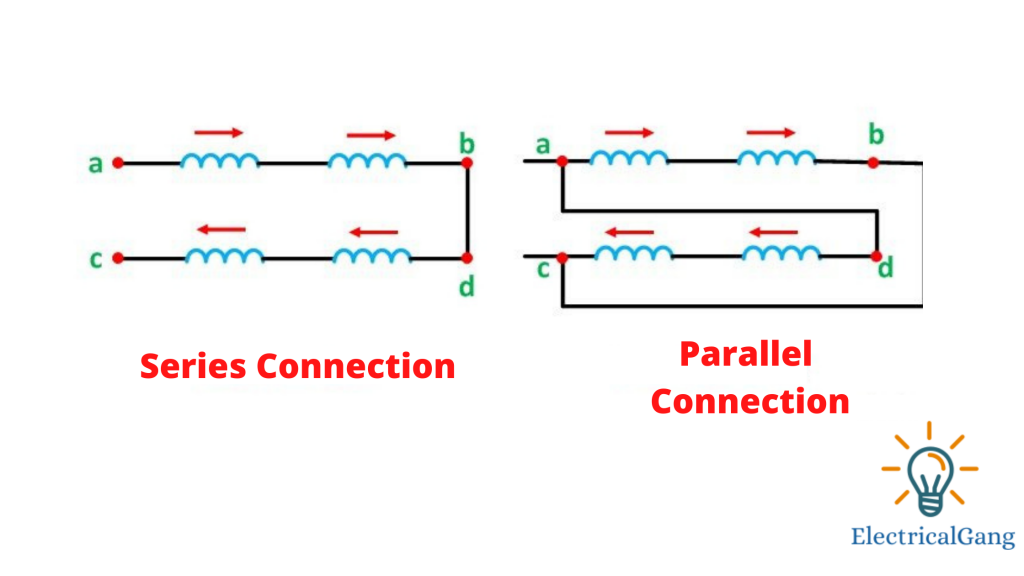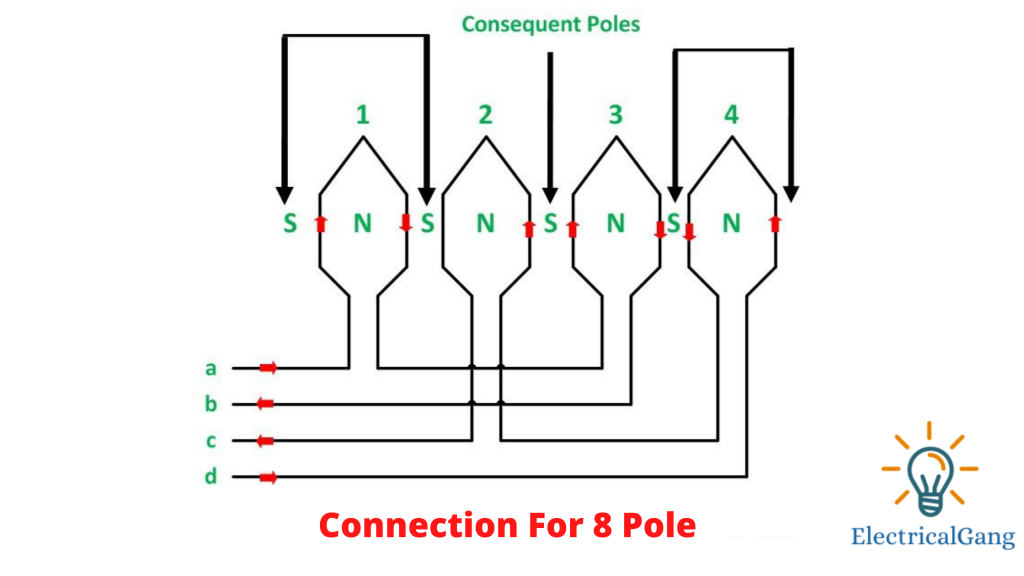Hello friends, in today’s article we will see what are the 3 ways to change the pole in the induction motor.
One way to change the pole is to control the speed in the induction motor. This method of speed control by pole changing is mostly used for cage motors. This is because the cage rotor develops a lot of poles on its own. Which is the same as the play of the stator winding.
The number of stator poles can be changed in the following 3 ways.
| Sr. No. | Best Pole Changing Method |
| #1. | Multiple stator windings |
| #2. | Resulting Poles |
| #3. | Pole Amplitude Modulation (PAM) |
#1. Multiple stator windings:
In this method, there are 2 windings in the part of the stator, which are set according to the different poles in the stator. And only one winding at a time is stimulated. The main thing is that the motor has 2 windings for 6 and 4 poles. For a frequency of 50 Hz, the synchronization speed will be 1000 and 1500 revolutions per minute, respectively. This method of speed control is less efficient and more expensive.
Also Read: Types of Electric Poles in Overhead Transmission Lines
#2. The Resulting Poles:
In this method, the winding of the same stator is divided into a group of few coils. And the ends of this mixed coil are brought out of the stator. The number of poles can be easily changed by changing the joint of the coil. In the study, the stator windings are divided into only two coil groups. The number of poles can be changed in a ratio of 2: 1.
The following figure shows the single-phase winding consisting of 4 coils. The coils are divided into two groups called A-B and C-D.

Group A-B has a weird number of coils which is (1, 3) while group C-D also has a number of coils (2,4). Both coils are connected in series.
The terminals a, b, c, d are taken out as shown in the above figure. The coils are carrying current in the given directions by connecting coil groups either in series or in parallel as shown in the figure below.

A total of 4 poles give us a speed of 1500 RPM according to the 50 Hz method. If the flow of coils a and b is to be changed then all other coils will produce an N pole. As shown in the figure

A total of 4 poles give us a speed of 1500 RPM according to the 50 Hz method. If the flow of coils a and b is to be changed then all other coils will produce an N pole. As shown in the figure.
Also Read: What Is Motor Winding | Types Of Motor Winding | Motor Winding Calculation
The flow of the pole mass must pass through the space of the pole mass to complete the magnetic path. In the same way, the magnetic pole of the second i.e. S pole is also produced. These induced poles are known as concentric poles.
Similarly, the machine has a double pole than before. And the synchronous speed is halved to the previous speed (i.e., 750 rpm). The above principle can be extended to all three phases of an induction motor. By choosing a combination of series and parallel connections between the coil groups of each phase.
Also, the star or delta connections between the phase speed change can be obtained with constant torque and constant power operation or variable torque operation.
#3. Pole Amplitude Modulation (PAM).
Pole amplitude modulation is a flexible method of pole changing that can be used in applications where speed ratios other than 2:1 are required. The motors designed for speed changing based on the poled amplitude modulation scheme are known as PAM motors.
Like this post? Share it with your friends!
Suggested Read –
- Advantages of High Transmission Voltage
- What Is Static Kramer Drive | Definition And Working Method
- What is Earthing | Difference Between Earthing and Grounding
- What is a Strain Gauge | Working Principle | Characteristics & Applications
- What is a Galvanometer | Construction Of Galvanometer | Working Principle Of Galvanometer | Applications Of Galvanometer